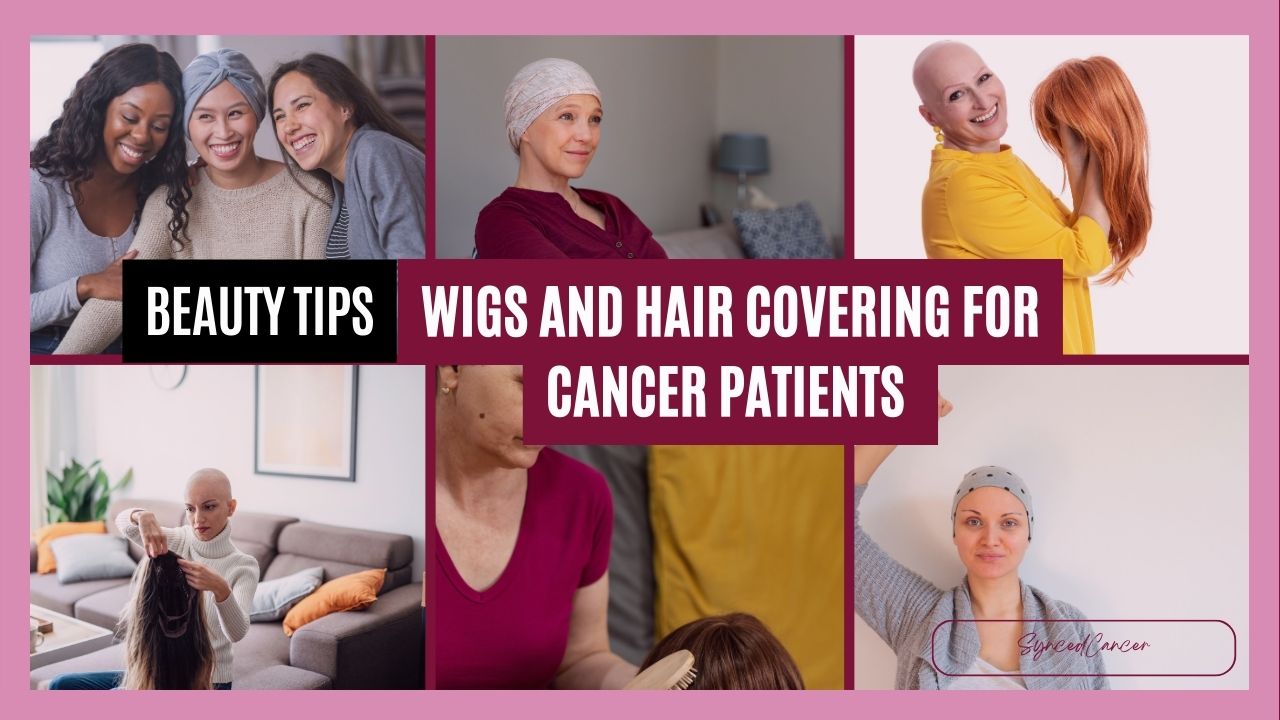Wigs and head coverings: finding your style during chemotherapy
Chemotherapy, a common treatment for cancer, often brings about numerous side effects, one of the most visible and emotionally challenging being hair loss. For many, hair is an essential part of their identity and self-expression, and its loss can significantly impact self-esteem and confidence. Wigs and head coverings offer practical and aesthetic solutions to this issue, allowing individuals to maintain a sense of normalcy and express their personal style during treatment. This blog post explores the various options available, the process of selecting the right wig or head covering, and tips for maintaining comfort and confidence during chemotherapy.
Understanding Hair Loss During Chemotherapy
Hair loss, medically known as alopecia, occurs because chemotherapy targets rapidly dividing cells. While this effectively destroys cancer cells, it also affects other fast-growing cells in the body, including those in hair follicles. The extent of hair loss during chemotherapy varies depending on the type and dosage of chemotherapy. Some people may experience partial hair thinning, while others might lose all their hair, including eyebrows and eyelashes.
According to the American Cancer Society, It’s important to remember that hair loss during chemotherapy is temporary. Sometimes, small amounts of hair may regrow between sessions. After completing the treatments, your hair will likely begin to grow back within a few months.

Types of Wigs
Wigs come in various styles, materials, and price ranges, catering to different needs and preferences. Here are the primary types of wigs to consider:
- Synthetic Wigs:
- Advantages: Synthetic wigs are generally more affordable than human hair wigs and require less maintenance. They come pre-styled and retain their shape even after washing, making them convenient for daily wear.
- Disadvantages: These wigs can be less breathable, potentially causing discomfort for some users. They may also look less natural than human hair wigs, although high-quality synthetic options can be quite convincing.
- Human Hair Wigs:
- Advantages: Human hair wigs offer a natural appearance and texture, allowing for versatile styling options, including heat styling and coloring. They tend to be more durable and can provide a more authentic look and feel.
- Disadvantages: These wigs are usually more expensive and require more care and maintenance than synthetic wigs. They need regular washing, conditioning, and styling to maintain their appearance.
- Lace Front Wigs:
- Advantages: Lace front wigs have a natural-looking hairline, making them appear more realistic. The lace material blends with the scalp, creating the illusion of hair growing directly from the hairline.
- Disadvantages: These wigs can be more delicate and require careful handling. They are often more expensive and may need professional fitting.
- Monofilament Wigs:
- Advantages: Monofilament wigs offer a natural scalp appearance because each hair is individually hand-tied to a fine mesh base. This allows for versatile parting and styling options.
- Disadvantages: They are usually more expensive than standard synthetic wigs and may require special care.
Choosing the Right Wig
Selecting the right wig involves several considerations to ensure comfort, style, and confidence:
- Consultation and Fitting: Visiting a wig specialist or a salon that caters to chemotherapy patients can provide personalized advice and fittings. A specialist can help measure your head accurately, suggest suitable styles, and ensure a comfortable fit.
- Style and Color: Choose a style that matches your natural hair or experiment with a new look. Consider your face shape, skin tone, and personal preferences. Many people opt for wigs similar to their natural hair to maintain a sense of normalcy, while others see it as an opportunity to try something new.
- Comfort: Look for wigs with features like adjustable straps, soft linings, and breathable materials. Comfort is crucial, especially for sensitive scalps during chemotherapy.
- Budget: Wigs vary widely in price. Determine your budget beforehand and explore options within that range. Some insurance plans cover part of the cost of wigs for medical hair loss during chemotherapy, so check with your provider.
Types of Head Coverings
In addition to wigs, various head coverings offer comfortable and stylish alternatives. Here are some popular options:
- Scarves and Bandanas:
- Advantages: Scarves and bandanas are versatile, lightweight, and come in various colors, patterns, and fabrics. They are easy to tie and can be styled in numerous ways.
- Disadvantages: They may require practice to tie securely and stylishly. Some fabrics may slip on a bald scalp, so choosing materials like cotton or bamboo can provide better grip and comfort.
- Hats and Caps:
- Advantages: Hats and caps provide full coverage and are easy to wear. Options like turbans, beanies, and soft caps are designed specifically for hair loss during chemotherapy, offering comfort and style.
- Disadvantages: Some hats may be too warm for indoor use or in hot climates. Look for breathable materials and consider hats with built-in sweatbands for added comfort.
- Turbans:
- Advantages: Turbans are pre-tied or require minimal tying, making them easy to wear. They come in various styles and materials, offering both casual and elegant options.
- Disadvantages: Like scarves, turbans may slip if not fitted correctly. Choosing turbans with adjustable features can help ensure a secure fit.
- Head Wraps:
- Advantages: Head wraps offer full coverage and can be styled creatively. They are available in various lengths, allowing for different wrapping techniques.
- Disadvantages: Similar to scarves and turbans, head wraps may require some practice to tie securely and comfortably.
Tips for Comfort and Confidence
Maintaining comfort and confidence while wearing wigs or head coverings during chemotherapy involves several strategies:
- Scalp Care: Chemotherapy can make the scalp sensitive and dry. Use gentle, moisturizing shampoos and conditioners, and avoid harsh chemicals. Consider using a soft brush or your fingers to massage the scalp gently.
- Wig Care: Follow the manufacturer’s instructions for washing and styling your wig. Use products specifically designed for wigs to avoid damage. Store your wig on a wig stand to maintain its shape.
- Head Covering Care: Wash scarves, turbans, and other head coverings regularly to keep them clean and fresh. Choose materials that are gentle on the skin and avoid anything that might cause irritation.
- Confidence Boosters: Experiment with different styles and accessories to find what makes you feel best. Earrings, makeup, and even glasses can complement your look and enhance your confidence.
- Support and Resources: Join support groups or online communities for individuals undergoing chemotherapy. Sharing experiences and tips with others can provide emotional support and practical advice.
- Professional Guidance: Seek guidance from professionals such as wig specialists, stylists, and healthcare providers. They can offer valuable insights and support to help you navigate this aspect of your treatment.
Conclusion
Hair loss during chemotherapy can be a challenging and emotional experience, but wigs and head coverings offer practical solutions to help individuals maintain their style, comfort, and confidence. Understanding the types of wigs and head coverings available, selecting the right options, and following tips for care and comfort can make a significant difference in how one feels during treatment. Embracing these tools allows individuals to express their personal style and regain a sense of control and normalcy during a difficult time. Through careful selection and support, those undergoing chemotherapy can find ways to enhance their appearance and boost their self-esteem, contributing to their overall well-being and quality of life.
REFERENCES
America Cancer Society – https://www.cancer.org/cancer/managing-cancer/side-effects/hair-skin-nails/hair-loss/choosing-and-wearing-wig.html
Assessed 17th June, 2024
Healthline – https://www.healthline.com/health/wigs-for-chemo-patients
Assessed 17th June, 2024










What do you think?
It is nice to know your opinion. Leave a comment.